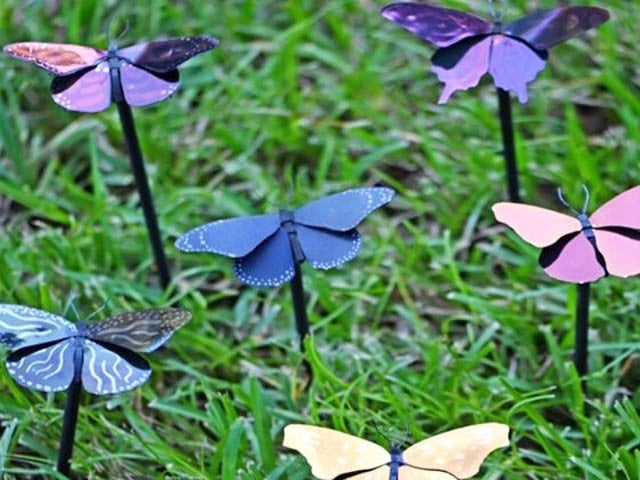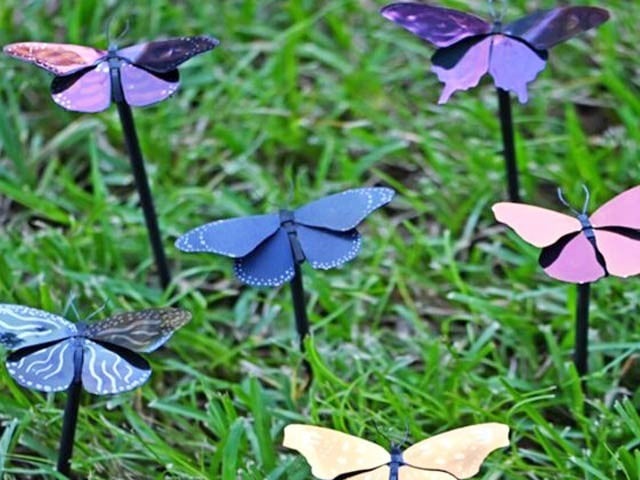
Plasmonic paint is applied to metal butterflies to reveal different colors. Photo: Courtesy of University of Florida
Florida: Scientists have created the world’s lightest paint that contains nanoparticles. It can be easily affixed to any metal and an entire Boeing 747 aircraft can be painted with three pounds of paint that would otherwise require 1,000 pounds of conventional paint for the same job.
The preparation of this paint is very easy which also dissipates the heat and keeps its luster for hundreds of years by adapting to any color. However, its biggest feature is that it is the lightest pigment in the world. This paint containing nanoparticles has been named ‘plasmonic pigment’.
Its use will help to keep the planes light on one hand and on the other hand it will have the best effects on the environment. According to scientists, the emission of harmful chemicals and greenhouse gases is very less in the production of this paint.
It was developed by University of Central Florida nanoscientist Debashish Chanda and his colleagues. During the laboratory test, it was found that peeling the paint reduced the surface temperature by 13 to 16 degrees Celsius, which is also a very promising development. By mixing it with ordinary pigments, the cost of air conditioners can be reduced, which is still environmentally friendly.
The nanoparticles in the plasmonic paint are completely colorless, but they absorb light and show their color and only need to add a new color. Experts have taken the same approach to watching butterflies, which we have received in the form of an eco-friendly gift.
(function(d, s, id){
var js, fjs = d.getElementsByTagName(s)[0];
if (d.getElementById(id)) {return;}
js = d.createElement(s); js.id = id;
js.src = “//connect.facebook.net/en_US/sdk.js#xfbml=1&version=v2.3&appId=770767426360150”;
fjs.parentNode.insertBefore(js, fjs);
}(document, ‘script’, ‘facebook-jssdk’));
(function(d, s, id) {
var js, fjs = d.getElementsByTagName(s)[0];
if (d.getElementById(id)) return;
js = d.createElement(s); js.id = id;
js.src = “//connect.facebook.net/en_GB/sdk.js#xfbml=1&version=v2.7”;
fjs.parentNode.insertBefore(js, fjs);
}(document, ‘script’, ‘facebook-jssdk’));



